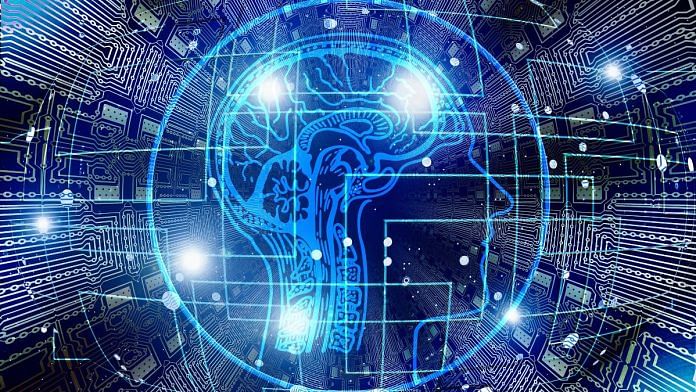Thank you dear subscribers, we are overwhelmed with your response.
Your Turn is a unique section from ThePrint featuring points of view from its subscribers. If you are a subscriber, have a point of view, please send it to us. If not, do subscribe here: https://theprint.in/subscribe/
Artificial Intelligence is often framed as a threat to jobs—a disruptive force poised to replace human labour at an unprecedented scale. From call centres to accounting firms, from routine coding to legal research, Generative AI and automation tools are already demonstrating capabilities that once seemed untouchable. The fear of widespread job loss is not unfounded. McKinsey, among others, estimates that nearly a quarter of global work activities could be automated by the early 2030s.
Yet, there is another equally significant demographic trend reshaping the labour market—the aging of populations. In countries such as Japan, South Korea, Germany, and even China, the working-age population is shrinking. This is not because jobs are disappearing, but because people are. Fertility rates have fallen below replacement levels, and the proportion of elderly citizens is rising sharply. These nations face a paradox: they need more workers but have fewer people available to fill roles.
AI and Aging: Complementary Forces in Developed Countries
This is where AI and aging unexpectedly complement each other. In economies that are already greying, AI is less a destroyer of jobs and more a replacement for the labour that no longer exists. Japan, for example, has pioneered the use of robotics and AI-driven systems not to replace young workers, but to stand in for absent ones—care robots for the elderly, AI-assisted diagnostics for hospitals short on doctors, and factory automation for industries facing chronic staff shortages.
In such societies, the fear of AI taking away jobs is muted by the demographic reality that many jobs would otherwise remain unfilled. AI is effectively stepping into the gap created by demographic decline. For them, the challenge is not managing unemployment but managing the technological transition in a way that sustains productivity and care standards as their populations age.
India’s Young Advantage—and the Ticking Clock
India, however, tells a different story. The country’s demographic structure is still overwhelmingly young. Nearly two-thirds of Indians are in the working-age bracket, and the median age is around 28—more than a decade younger than China or the U.S. This “demographic dividend” has been hailed as India’s biggest economic advantage for the next 10–15 years. But this window is finite.
Demographers estimate that by the mid-2030s, India’s working-age population will peak. After that, the proportion of elderly citizens will start rising sharply. By 2046, the elderly are projected to outnumber children under 14. In other words, India’s advantage will begin to fade just as many advanced economies have already entered the post-dividend phase. If India cannot create enough productive jobs during this critical decade, its youth bulge may turn into a liability.
AI’s Adoption Curve
The question is: will AI go mainstream while India’s workforce is still young? Current projections suggest that large-scale AI adoption is still 5–15 years away. Today’s Generative AI tools, while impressive, remain in an experimental phase. They lack reliability, governance frameworks, and cost efficiency at scale. Gartner’s hype cycle places most AI technologies in the “Trough of Disillusionment,” meaning that widespread productivity gains will take years to materialize.
If this trajectory holds, AI’s mainstream integration across sectors like healthcare, education, law, and public administration may not happen until the 2030s—roughly the same time that India’s demographic dividend starts to decline. This sets up an intriguing scenario where India’s labour market transition and AI’s maturity could synchronize.
Possible Scenarios for India
- The Collision Scenario:
If AI adoption accelerates too quickly, India’s youthful workforce may find itself competing against machines for jobs before the country has built a strong industrial and service base. Sectors such as BPO, customer service, and low-skill IT roles—once the backbone of India’s outsourcing economy—could see rapid automation. Without massive reskilling efforts, unemployment among young Indians could spike even as the global economy demands fewer entry-level jobs.
- The Missed Opportunity Scenario:
Alternatively, if AI adoption lags too far behind—say, beyond 2040—India could enter its aging phase without having reaped the productivity gains AI promises. By then, the country would face the dual pressures of a shrinking workforce and a delayed technological transition. This would mirror some of the struggles seen in late-industrializing economies that missed the manufacturing wave.
- The Synchronization Scenario:
The most optimistic possibility is that AI and India’s demographic transition align productively. Over the next decade, India could use its young workforce to build, train, and scale AI systems, preparing the ground for when labour shortages begin. By the time the aging curve hits in the 2035–2040 period, AI could step in not as a threat, but as a productivity amplifier—automating routine tasks while humans focus on complex, creative, or empathetic roles.
This requires a proactive strategy: early investment in AI literacy, creation of AI-enabled jobs (rather than job replacement), and building a global service economy where Indians are not just users of AI, but architects of AI solutions.
The Decisive Decade
India’s story in the 2030s will be defined by the intersection of two megatrends: a maturing workforce and a maturing technology. Whether this convergence leads to disruption or opportunity depends on choices made now—in education, infrastructure, governance, and industry adoption.
The challenge is to ensure that when AI becomes mainstream, India’s workforce is not left behind but is ready to ride the wave. The 2020s are not just a decade of demographic advantage—they are the runway for an AI-driven, post-dividend future.
These pieces are being published as they have been received – they have not been edited/fact-checked by ThePrint.


